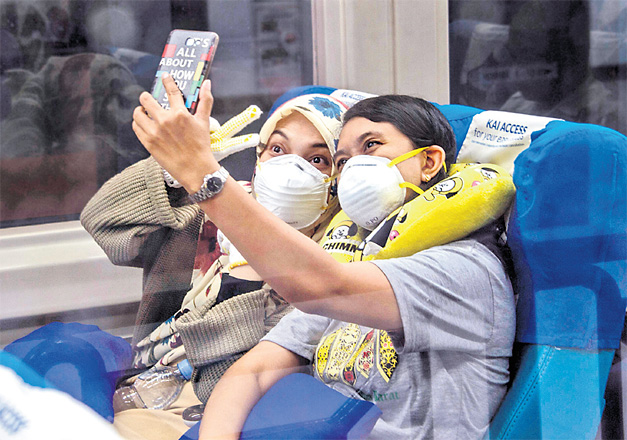RBI in its
Monetary Policy statement on the 27th March 2020 front-ended the
effort of banks through pumping liquidity, 3-month moratorium on term loan
instalments, working capital while interest will continue to accrue during the
moratorium period with a further clarification that instalments will
include the payments falling due from March 1, 2020 to May 31, 2020: (i)
principal and/or interest components; (ii) bullet repayments; (iii) Equated
Monthly instalments; (iv) credit card dues; review of working capital limits of
all enterprises. 3% CRR recommended by Narasimhan Committee, Tarapore and Ashok
Lahri at different points of time has been announced.
Interest will continue to be charged on the EMIs and they
would to that extent enlarge the instalments that follow the moratorium. To
expect the industry to recover immediately after the lockdown period is over
will be an overestimation. McKinsey says:” Restarting production facilities can be more challenging than
shutting them down. It requires a thoughtful approach to revive the supply
chain, match volume to actual demand, and, most importantly, protect the
workforce.” They require minimum six months to get back into the full supply
chain. Banks’ sagacity to reassess working capital lies here. Banks should not
cut down the limits because the size of the Balance sheets of all firms will be
downside of the previous years including their own.
Future lending shall be cash flow based and not Balance
sheet ratio based or even just turnover based (Banks are asked to extend
minimum of 20% of projected turnover while most have adopted this as the
maximum and this includes SIDBI).
RBI February data indicates that as of January 2020 credit
growth to agriculture and allied activities decelerated to 6.5% from 7.6% in
January 2019; to industry more than halved during the same period; to services sector decelerated to
8.9% from 23.9% whereas for personal loans it grew by 16.9%. This position prevails despite liquidity infusion measures
during the last two monetary policy initiatives. Therefore, risk aversion and
not liquidity is the problem with banks.
The already risk-averse banks can hardly lend
during this period of lockdown seeing temporary shutdown of 90% enterprises.
They can only provide online comfort following the policy announcement, al bait
for three months! For a running industry to increase capacity is easier than a
re-opened industry after lockdown. Further, investment required after
re-starting is also going to be much more than now. Therefore, banks must
prepare to lend more aggressively immediately after the current period. But can
they move away from aversion to appetite in taking legitimate credit risk,
without improving their lending infrastructure?
A few special efforts that still beg attention
are:
· Banks to stop all SARFAESI
proceedings and developing forbearance for the manufacturing MSEs.
· Extension of NPA threshold to 180
days, effective January 2020 quickly that will keep accounts standard for any
further booster doses to flow to the industry.
T
Special Mention Accounts 1 &
2 categories will also need uniform forbearance.
· Unfunded limits – LCs, Guarantees,
ECGs falling due between January and May 2020 should not be revoked for
non-compliance but their periods extended by another six months. RBI directive
is imperative.
·
A All viability tests shall be done by
State Government accredited agencies
· GST should be reduced to 5% till the
end of December 2020 for all the enterprises that would submit their quarterly
returns as required under law, even if at exempted thresholds. Review of impact
should be based on an evaluation study by all the Industry Chambers.
· All MSMEs that maintain record of
manpower employed verifiable with EPF and ESI registrations.
· All MSMEs may be permitted to engage
contract labour with the social security burden absorbed by the State
Government on reduced commitments annually by 20% provided they all are
digitized for all transactions.
· Power Tariff should be cut by 50%
for all the manufacturing enterprises provided they are all digitized and
registered under Udyog Aadhar or TSiPASS.
· All MSME Funds should be maintained
and monitored by the DC-MSME through NSIC instead of SIDBI.
GoI may
focus more on cleaning up the financial sector with a sense of urgency to
render its services effectively in tackling this uncertainty effectively. At one
end, cash relief from the exchequer should flow to all digitized Jan Dhan and
Mudra loan accounts and at the other end, credit shall pump prime the economy
with responsible and timely deployment post lockdown.
More
digitized developed economies are redirecting their efforts to containing the
spread and holding people in discipline using WhatsApp, digital alarms at the
Carona Control Rooms etc.
South Korea
has transferred cash to all the SMEs to pay for their labour for one month. US
has announced a $2 trillion package to combat the new war. Several nations
across the world – with 196 affected by this monster Carona - are seriously
contemplating the relief packages. G-20 announced $5trn relief package. For
once everyone stopped thinking of fiscal deficit. Extraordinary problems
require extraordinary solutions.
No time for
Hobson’s choice. Saving lives is more important than saving the economy, no
doubt. But preparing the economy to respond to the post COVID-19 very
effectively also brooks no let-up in efforts.
*This is
part of the article published on the 30th March in
Telangana Today with some additions. A Response write up to the CII.
